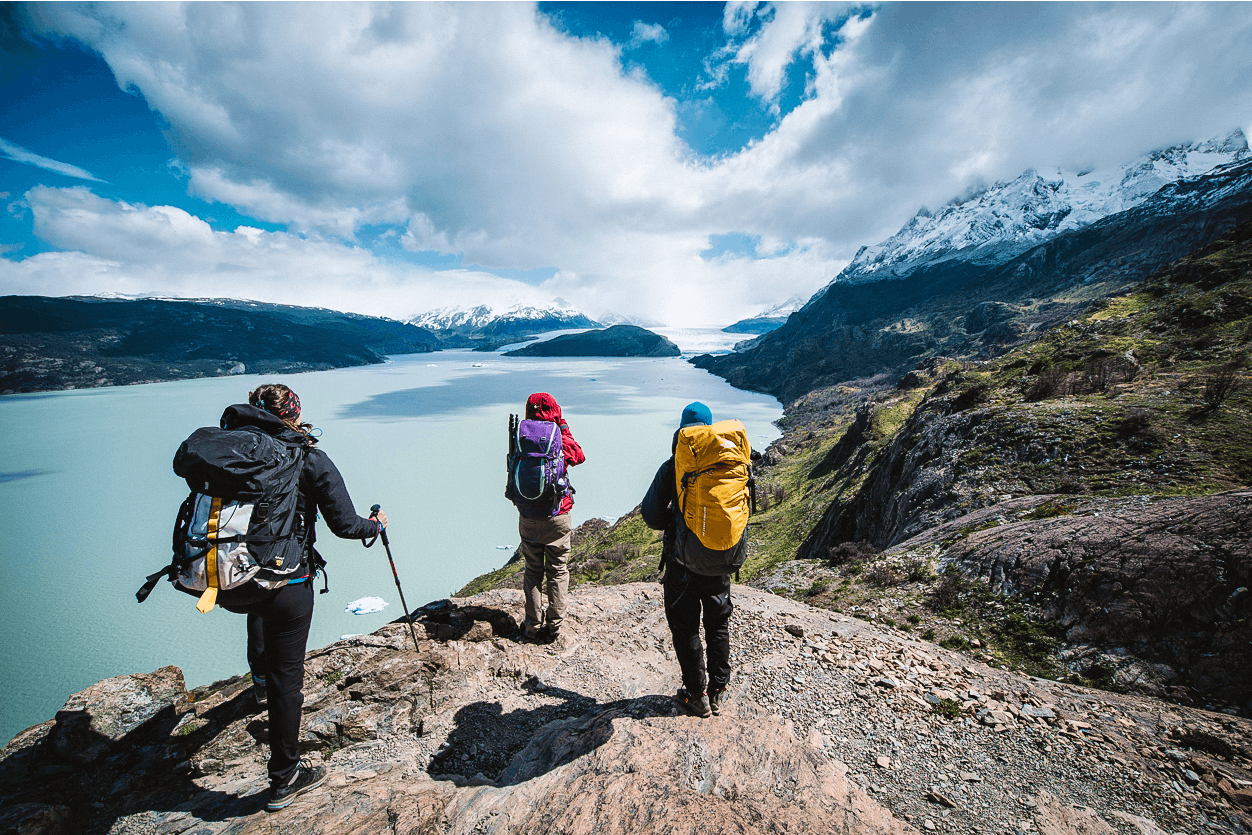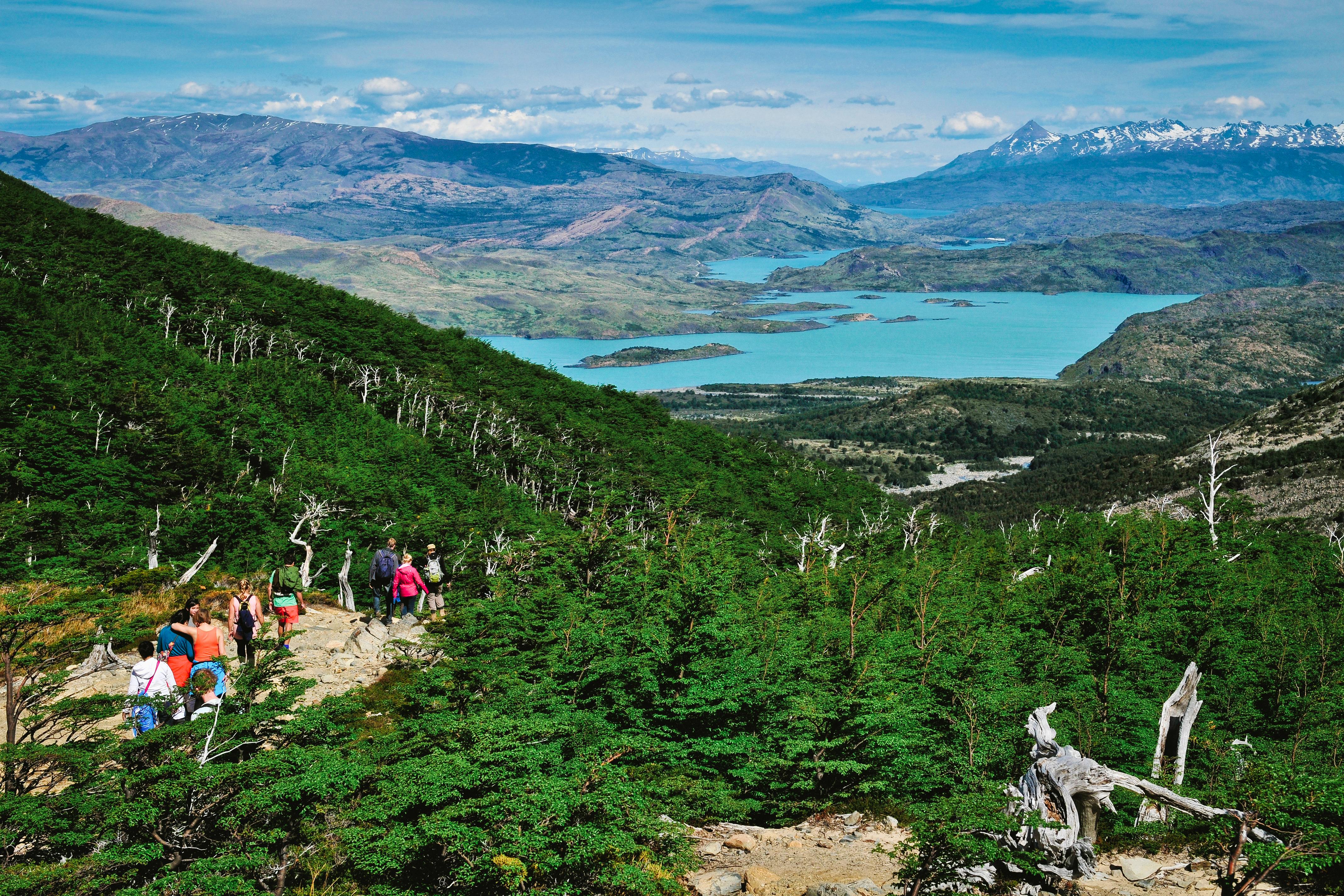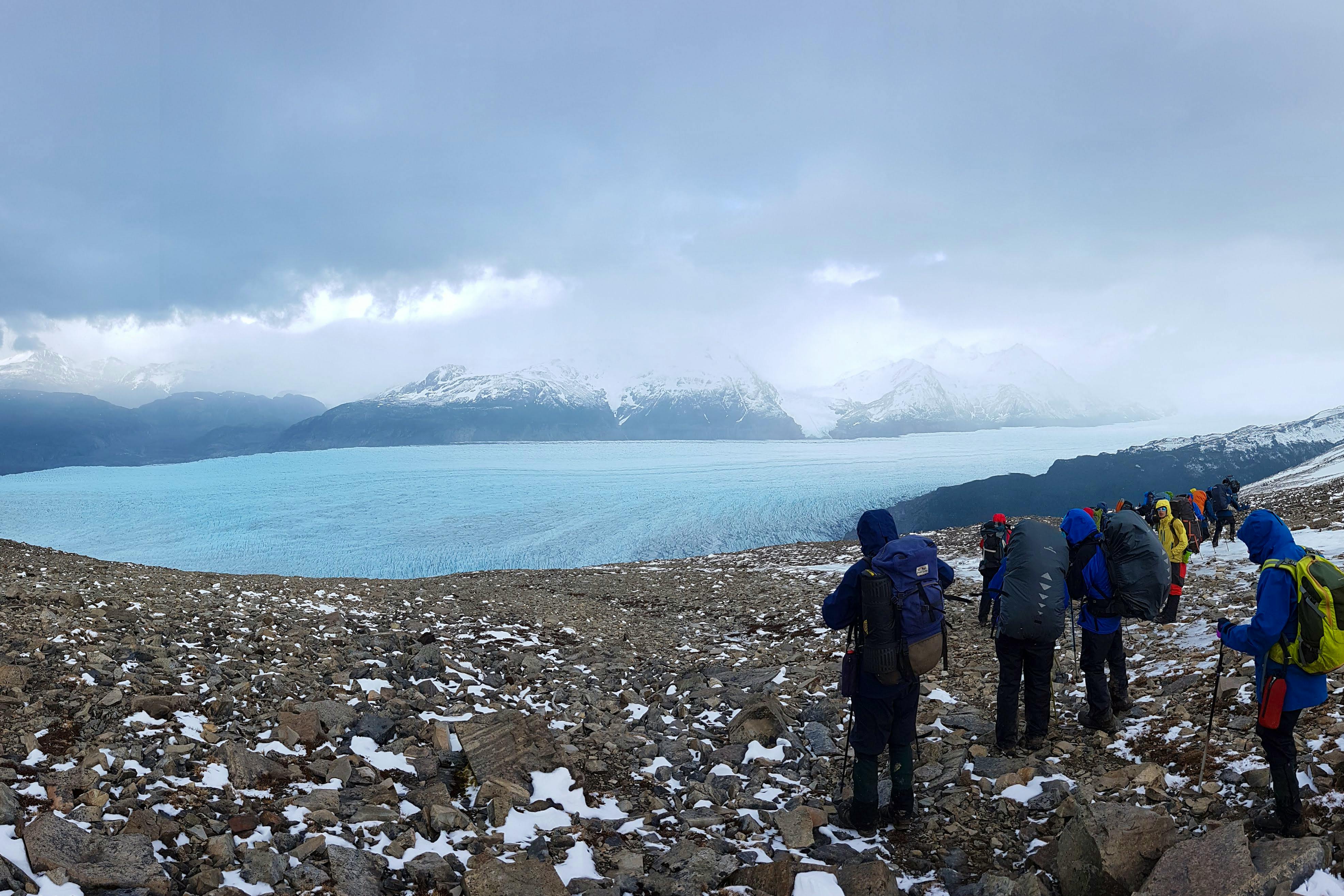Patagonia
Shared by Chile and Argentina, Patagonia is the epitome of remote beauty. It's a land of awe-inspiring glaciers, towering snow-capped peaks, and mighty waterfalls. Adventure travelers can witness the dramatic calving of icebergs, hike in Torres del Paine, and visit the world's southernmost city.
Snapshot of Patagonia
When dreaming of Patagonia, images of a vast, striking, and distant territory on the tip of South America usually come to mind. Sprawled across Chile and Argentina, the region is known for its spectacular scenery.
Although Patagonia is shared by the two countries, the landscapes are completely different, and so too are the Patagonia adventure tours on offer.
Chile is known for it's legendary trails in the Torres del Paine National Park. Towering snow-capped granite spires meet glacier-fed lakes, offering unbeatable hiking and photography opportunities.
Every year, the park welcomes hundreds of hikers to its grounds, with the three majestic granite towers standing guard. Two of the most popular treks are the famous O Circuit and W Trek.
Many adventurers also seek out the remote fjords, which are perfect for kayaking among icebergs and witnessing Patagonia's glaciers up close.
In the Patagonian region in Argentina, some of the highlights are the Perito Moreno Glacier, El Chaltén's hiking trails (including Fitz Roy), and the penguins of Ushuaia.
Patagonia Adventure Travel FAQs
It really depends what you're after.
Visiting in September and October offers a unique experience. It's early spring in Patagonia during these months, so you can expect cooler temperatures and potentially unpredictable weather, including occasional snowfall and strong winds.
But, the park is less crowded compared to the peak summer months, providing a more serene and tranquil atmosphere for exploration. Wildlife sightings, including guanacos and native birds, are still abundant, and the landscapes are beginning to awaken with vibrant greenery and blooming flowers.
While some trails may be muddy or partially snow-covered, it's still possible to hike and explore the park's iconic sights, albeit with some additional precautions and flexibility due to the transitional weather.
Summer in Patagonia is from late November to early March. This period offers more moderate temperatures and longer daylight hours, making it ideal for hiking, camping, and exploring the stunning landscapes.
However, weather in Patagonia can be unpredictable year-round, so be prepared for sudden changes and always check forecasts before planning your trip.
The W and O circuits in Torres del Paine National Park offer different experiences. This is mainly due to their length, terrain, and what you'll see along the way.
The W Trek is approximately 80 km (50 miles) long and can typically be completed in 4 to 5 days. It is named after its W-shaped route and is more accessible, hence it's usually busier with trekkers.
This trek will take you past many of the park’s highlights such as the Grey Glacier, French Valley, and the Torres del Paine themselves. It's possible to stay in lodges along the W Trek, and meals are typically had in these lodges whether you're staying in them or camping.
On the other hand, the O Circuit is longer, approximately 110 km (68 miles), and usually takes 7 to 9 days to complete. It encompasses all of the W Trek plus a backside that provides more solitude and additional scenery like Dickson Lake, Los Perros Glacier, and John Gardner Pass.
The O Circuit is generally considered more challenging due to its length and the inclusion of more remote areas. There are fewer lodging options on the O Circuit's additional sections, meaning that camping is compulsory in certain parts.
It offers a more immersive experience into the wilder, less-traveled parts of the park. The O Circuit is only open during the summertime, from November to March, unlike the W Trek, which is accessible for a longer part of the year, from September to April.
There's also a cap on how many trekkers can be on the top section of the O Circuit at one time, specifically limited to 80 trekkers.
In terms of difficulty, both treks are manageable for people with regular hiking experience. But the O Circuit, given its longer duration and remote sections, requires more physical and mental preparation.
The elevation gain is higher on the O Circuit as well, presenting an additional challenge compared to the W Trek.
Guanacos: Wander the vast expanses and rolling hills of Torres del Paine or the open Patagonian steppe to spot these elegant relatives of llamas.
Condors: Look up while hiking the Andean ranges; their grand wingspan is a sight against the backdrop of clear, blue skies.
Pumas: These elusive felines are the lords of the Patagonian landscape, often spotted in the quieter, more secluded mountain areas of Torres del Paine.
Whales: Head to the coastal waters of Peninsula Valdés between June and December for a chance to witness these majestic sea mammals.
Penguins: For a charming encounter, visit the shores near Punta Tombo or the chilly waters around Ushuaia where these playful creatures gather.
The best way to get to Patagonia typically involves flying to key gateway cities such as Punta Arenas or Puerto Natales in Chile, or El Calafate in Argentina.
From these locations, you can travel by bus, rental car, or domestic flights to various destinations within Patagonia, depending on your itinerary. The choice between Chile and Argentina depends on which part of Patagonia you plan to explore.
If you're doing a guided tour, the local operator will usually arrange transport to your destination.
When planning a trip to Patagonia, whether you'll need a visa depends on your nationality and the duration of your stay. It's always wise to check the current visa requirements with the respective consulates or embassies before your trip.
In general, while travel insurance may not be strictly mandatory for every aspect of your trip, it's highly recommended for peace of mind and covering unexpected incidents, especially if your trip involves activities like hiking or visiting remote areas.
Insurance can cover medical emergencies, theft, lost luggage, and trip cancellations. Remember, even if you don't anticipate serious injuries or illnesses, the costs for smaller issues can add up, especially in foreign countries.
Therefore, whether you're visiting the Argentinian or Chilean parts of Patagonia, securing a good travel insurance policy is a wise decision.
It's also important to ensure that your policy covers the specific activities you plan to undertake during your visit, such as trekking or adventure sports.
Lastly, some travel operators in Patagonia may have their own insurance requirements, so be sure to check with them before your trip. And it's a good idea to carry a printed copy of your insurance policy in case you don't have access to digital copies while traveling.
Why Skyhook?
Join over 27,000 Skyhook adventurers who've used our platform to book directly with our vetted local guides, at local prices (we never markup).
Expert Local Guides
Experienced local guides, handpicked by us.
Best Prices
Never pay a markup on the local guide's price.
Exclusive Club
Earn loyalty rewards every time you travel.
Great Social Vibes
Small group tours provide a richer experience.
Stellar Feedback
Over 2,800 reviews, average of 4.9/5 stars.








